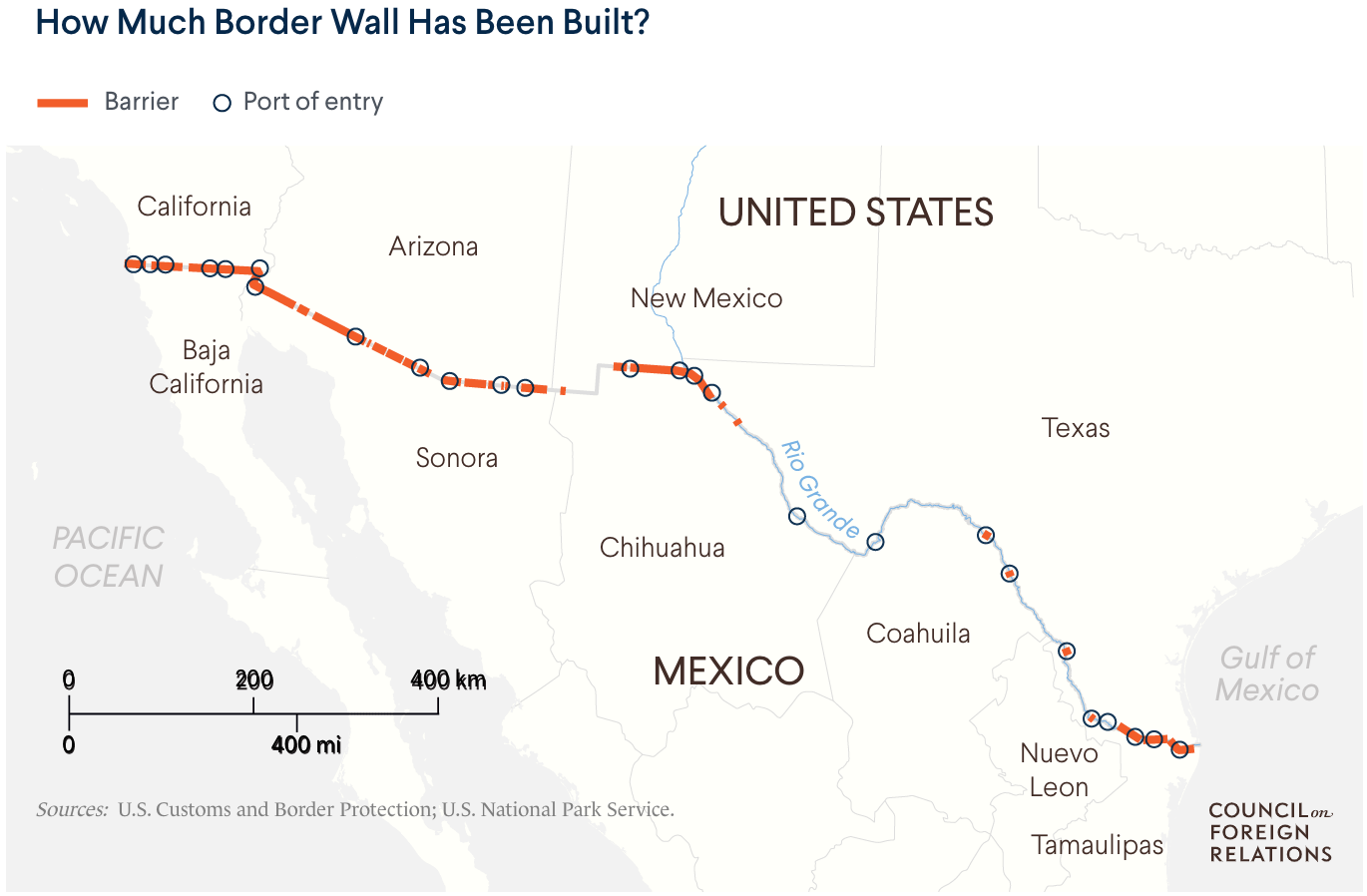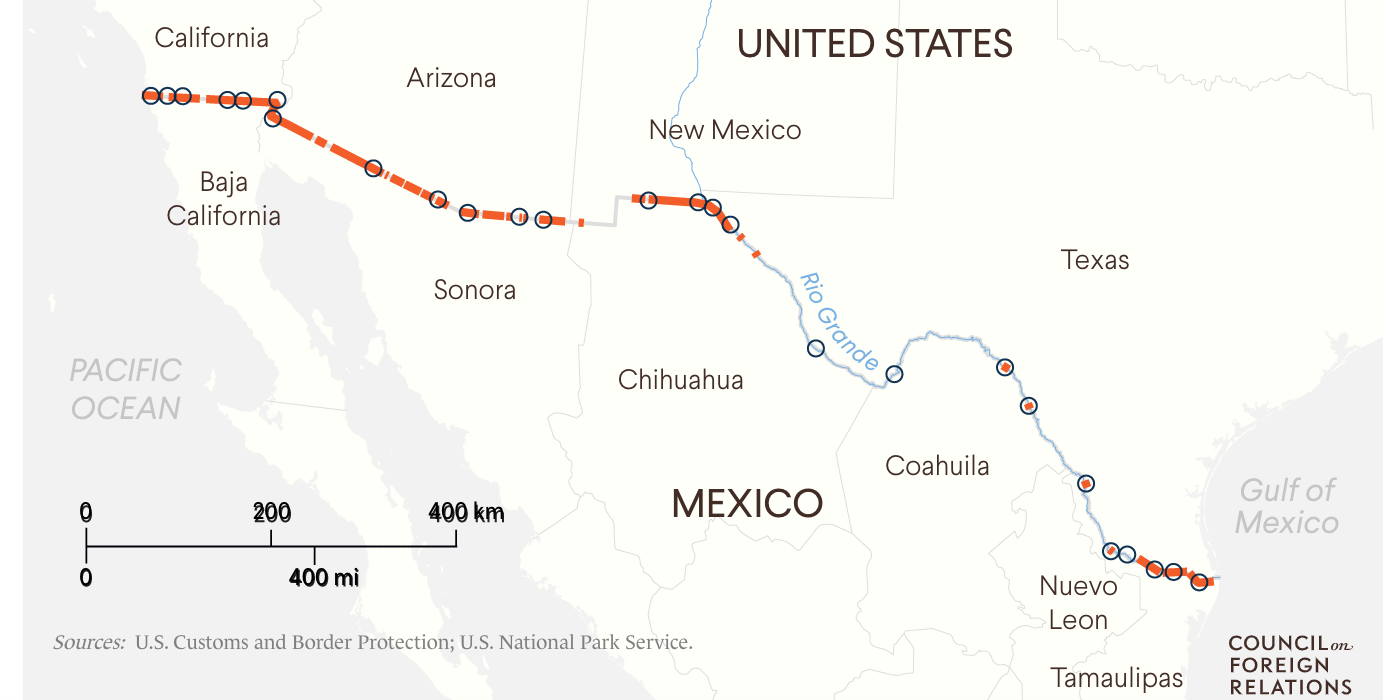In 2021’s hyper-partisan atmosphere, it can be challenging to distill fact from fiction, especially when it comes to events at the U.S.-Mexico border. According to some, the recent influx of migrants constitutes a “crisis,” directly resulting from Biden administration policies. For others, it reflects anticipated immigration flows plus a hangover from Covid-19 and problematic Trump-era policies. But how far apart are interpretations from news outlets on the left and right? Do articles accurately reflect conditions at the border or are they manipulated for political gain?
This week, The Factual used a dataset of 4,970 articles from 41 major news sources to compare coverage of immigration at the U.S.-Mexico border between two periods: February-March 2019 (under President Trump) and February-March 2021 (under President Biden). By looking at the overall distribution of articles as well as the appearance of keywords in titles, we can see how publishers may create content differently in varying political contexts. With this in mind, we then use a mix of highly credible articles to identify where the fault lines lie in media coverage of the border in 2021 and clarify the argument over whether the U.S. indeed faces a border “crisis.”
Is the Media Treating 2021 Different from 2019?
The similarities between the spikes in border crossings in early 2019 (under Trump) and 2021 (under Biden) give us the ability to compare how media coverage may have differed across varied political contexts. This lets us assess, for example, whether left-leaning outlets have been more lenient on the Biden administration than the Trump administration, as some right-leaning critics posit, or whether right-leaning outlets are seeking to play up a “crisis.” To do so, The Factual built a dataset of articles published in February and March 2019 and February and March 2021 about immigration and the U.S. Mexico border. Specifically, we looked at all articles containing keywords like “border” or “asylum” from 41 news outlets that The Factual regularly monitors; then, we cleaned the data further to remove articles not directly related to U.S. immigration (e.g., stories about Syrian refugees).
In the end, we can see how many articles were published, who is publishing them, and how often specific words appear in the titles. Overall, media treatment for both periods is seemingly alike in many ways, suggesting no great difference in coverage for Biden and Trump, but there is some evidence that media outlets on both sides are more likely to produce articles highlighting a perceived policy problem during an ideologically opposed president’s term.
Number of Articles
Overall, there were 25% more articles published in 2019 (2,762) than in 2021 (2,208). This runs counter to the actual number of U.S. Customs and Border Protection (CBP) “encounters” during the period — 180,276 during February-March 2019 and 273,359 during February-March 2021 — which may in part fuel the perception that the media is treating events differently under Biden. However, this may simply be a result of the number of concurrent border issues during the two periods, not the actual number of border encounters by CBP. For example, in addition to an influx of migrants, the news in 2019 was dominated by discussion about the border wall, from the emergency powers being used for its construction to its implications for border dynamics. As evidence, the term “wall” appeared in 58% of headlines in our dataset in 2019, compared to just 5% in 2021. With the construction of the wall currently stopped, there may simply be less relevant overall coverage. That said, the number of articles published across the time periods does not seem proportional to the number of crossings.
Source: Council on Foreign Relations
Please check your email for instructions to ensure that the newsletter arrives in your inbox tomorrow.
The Left-Right Split in Publishing Numbers
The data does show some differences between left and right-leaning publishers between the two time periods. For example, publishers categorized as Moderate Left published 35% of articles in the 2019 dataset, but 29% in 2021. Likewise, Moderate Right publishers jumped from 15% of articles in 2019 to 20% of articles in 2021, and Right publishers moved up from 29% to 35%. A range of factors might explain this variation, but it could suggest that news outlets tend to publish more stories about an issue when an ideologically opposed president is in office, to hold the administration accountable and perhaps for political ends.
Percentage of Article Output by Publisher Bias

Differences in Keywords
Looking at the difference in the titles of all articles in the dataset, we actually see slightly different terms used, but with roughly the same purpose. For example, while 25% of articles in the 2021 dataset use the word “crisis” (6% did so in 2019), 28% of articles in 2019 used the word “emergency” (1% did so in 2021). In this context, the terms effectively mean the same thing and occurred at comparable rates, suggesting that the media broadly treated the two time periods with comparable levels of urgency.
Frequency of Keywords in Article Titles

Looking further into the data, left- and right-leaning news outlets used the term “emergency” at similar rates in headlines in 2019, at 14% and 11%, respectively. In a nutshell, this suggests that both sides thought the border situation constituted an emergency at fairly similar rates. However, in 2021, 5% of articles from left-leaning outlets incorporated the word “crisis” compared to 20% of articles from the right. This could be interpreted as right-leaning outlets seeking to exaggerate a scenario to harm the Biden administration, as left-leaning outlets underusing a term to downplay the severity of a problem, or a combination of the two.
“Emergency” or “Crisis”: Frequency of Keywords in Article Titles (Left vs. Right)
Some further differences can be seen in terms of the frequency that either president is mentioned by name. Overall, “Trump” was mentioned in 89% of article titles in the 2019 dataset, while “Biden” appeared in 82% of article titles in the 2021 data. These overall figures hide that news outlets on both sides were more likely to mention a president’s name in association with the border when in ideological opposition. For instance, “Trump” was mentioned in 46% of articles in 2019 from left-leaning sources and 31% of those from right-leaning sources. Conversely, articles from right-leaning outlets mention “Biden” in 49% of 2021 titles, compared to 29% on the left.
Frequency of President Names in Article Titles (Left vs. Right)
Key Viewpoints on the Border in 2021
Beyond a quantitative view of coverage, it’s useful to qualitatively explore the varying perspectives on the U.S.-Mexico border in 2021. Below we highlight some of the key perspectives on the current border situation, including some recommended reading from across the political spectrum.
On the Left: Biden Administration Policies Leave Much to Be Desired
Despite obvious ideological overlap between many left-leaning sources and the Biden administration, there is no shortage of criticism for the perceived missteps or mishandling thus far of a growing flow of migrants at the southern border. These concerns recently came to a head when Axios gained access to photos from inside a detainment facility for minors showing overcrowding and insufficient bedding — one such facility reportedly reached over 16 times its official capacity. Even with loud rejections of Trump-era policies, like separating children from their families, migrants continue to face inhumane conditions and are still being turned away in huge numbers under Title 42 — a measure invoked during Covid-19 to turn people away for public health concerns.
Source: U.S. Customs and Border Protection?
While many articles are concerned about the conditions migrants are facing, they are less willing to use the terminology of a “crisis.” As the Washington Post argues, the number of CBP “encounters” is actually about where one would reasonably expect given two key factors: (1) anticipated seasonal patterns and (2) a backlog of would-be migrants from 2020. Along with some other factors, like the devastation caused by hurricanes in 2020, many left-leaning perspectives posit that the number of crossings, while large, is not a direct result of Biden-era policies, even if the administration bears some responsibility current conditions. Instead, the “crisis” language may be invoked time and time again regardless of the current administration — a “story the media like to tell over, and over, and over, to massive, if unintended, political effect.”
Recommended Reading:
“Biden administration struggles to turn chaos into order on US border” — The Guardian
Author: Alexandra Villareal | Publisher Bias: Moderate Left | Credibility Grade: 82%
Key Quote: “Children are stranded in inhospitable, makeshift border enforcement facilities, where experts and officials say they don’t belong, sometimes for more than 10 days.”
“The Real Border Crisis” — The Atlantic
Author: Adam Serwer | Publisher Bias: Moderate Left | Credibility Grade: 76%
Key Quote: “To the extent that the United States has a border crisis, it is an enduring one: the mistreatment of human beings in American custody.”
Please check your email for instructions to ensure that the newsletter arrives in your inbox tomorrow.
On the Right: Immigration Problems Made Worse by Biden
Right-leaning coverage of the crossings at the U.S.-Mexico border has been far more willing to connect problems to Biden-era policy choices. For many, the reversal of key Trump policies was tantamount to an open invitation to would-be migrants. Much of the concern touches on the same issues — the unsuitable conditions and rising number of crossings — as left-leaning sources, but sees Biden as far more responsible for both. Critics suggest that some policy actions accomplish far less than they claim, like a move from Remain in Mexico to effectively “Wait in Mexico.” However, parts of the “open border” characterization have been questioned by others on the right, partly due to the number of migrants being turned away.

Source: Council on Foreign Relations
It’s worth noting that there was no shortage of right-leaning outlets that took issue with certain Trump-era policies (such pressure led to Trump distancing himself from such policies) or that acknowledge the long-term origins of the current border pressure. Now, however, right-leaning sources are positing that left-leaning coverage of the conditions on the border is far more lenient than coverage of conditions under Trump, even in the face of similarly crowded and inhospitable conditions. While our analysis above gives no definitive evidence, it does seem to suggest that media outlets on both sides are prone to publishing in ways that could offer some benefit to political allies.
Recommended Reading:
“How the U.S. Patrols Its Borders” — Council on Foreign Relations
Author: Amelia Cheatham, Claire Felter, Zachary Laub | Publisher Bias: Moderate Right | Credibility Grade: 86%
Key Quote: “Although overall apprehensions along the southern border are spiking, the monthly totals remain below the peaks of the early 2000s.”
“Joe Biden, Border Cop” — Reason
Author: Billy Binion | Publisher Bias: Moderate Right | Credibility Grade: 76%
Key Quote: “People on both the left and right assumed Biden would lift Trump’s draconian immigration restrictions. But for some hopeful immigrants, things have actually gotten worse.”
Note: This Google Sheet lists articles used to inform the findings of this article and indicates how the articles scored according to The Factual’s credibility algorithm. To learn more, read our How It Works page.

